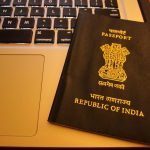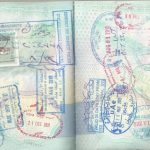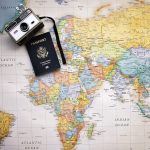Your Essential Guide to Getting an E-Visa for India

E- Visa India
Background
The Indian government introduced a tourist visa on arrival scheme on January 1, 2010. It was initially trialed for citizens of five countries. Subsequently, a year later, it was extended to include a total of 11 countries.
And, from April 15, 2014 it was extended to include South Korea.
Effective November 27, 2014, this visa on arrival scheme was replaced by an online Electronic Travel Authorization (ETA) scheme. It has been implemented in phases and progressively made available to more countries.
In April 2015, the scheme was renamed “e-Tourist Visa” by the Indian government, to remove confusion over the previous ability to get a visa on arrival without applying in advance.
In April 2017, the scheme was further extended to passport holders of 161 countries (up from 150 countries).
The Indian government has also widened the scope of the visa scheme to include short duration medical treatment and yoga courses, and casual business visits and conferences. Previously, these required separate medical/student/business visas.
The aim is to make getting an Indian visa easier, and to bring more business people and medical tourists into the country.
To facilitate this change, in April 2017, the “e-Tourist Visa” scheme became known as “e-Visa”. Furthermore, it was divided into three categories:
- e-Tourist Visa
- e-Business Visa
- e-Medical Visa
Two additional categories — e-Medical Attendant Visa and e-Conference Visa — have since been added. Up to two e-Medical Attendant visas will be granted against one e-Medical Visa.
The visa categories can be clubbed together. However, e-Conference visas are only permitted to be clubbed with e-Tourist visas.
Who is Eligible for an E-Visa?
Passport holders of the following 166 countries: Albania, Andorra, Angola, Anguilla, Antigua & Barbuda, Argentina, Armenia, Aruba, Australia, Austria, Azerbaijan, Bahamas, Barbados, Belgium, Belize, Bolivia, Bosnia an Herzegovina, Botswana, Brazil, Brunei, Bulgaria, Burundi, Cambodia, Cameroon Union Republic, Canada, Cape Verde, Cayman Island, Chile, China, Hong Kong, Macau, Colombia, Comoros, Cook Islands, Costa Rica, Cote d’lvoire, Croatia, Cuba, Cyprus, Czech Republic, Denmark, Djibouti, Dominica, Dominican Republic, East Timor, Ecuador, El Salvador, Eritrea, Estonia, Fiji, Finland, France, Gabon, Gambia, Georgia, Germany, Ghana, Greece, Grenada, Guatemala, Guinea, Guyana, Haiti, Honduras, Hungary, Iceland, Indonesia, Iran, Ireland, Israel, Italy, Jamaica, Japan, Jordan, Kazakhstan, Kenya, Kiribati,Kyrgyzstan , Laos, Latvia, Lesotho, Liberia, Liechtenstein, Lithuania, Luxembourg, Madagascar, Malawi, Malaysia, Mali, Malta, Marshall Islands, Mauritius, Mexico, Micronesia, Moldova, Monaco, Mongolia, Montenegro, Montserrat, Mozambique, Myanmar, Namibia, Nauru, Netherlands, New Zealand, Nicaragua, Niger Republic, Niue Island, Norway, Oman, Palau, Palestine, Panama, Papua New Guinea, Paraguay, Peru, Philippines, Poland, Portugal , Qatar, Republic of Korea, Republic of Macedonia, Romania, Russia, Rwanda, Saint Christopher and Nevis, Saint Lucia, Saint Vincent and the Grenadines, Samoa, San Marino, Senegal, Serbia, Seychelles, Sierra Leone, Singapore, Slovakia, Slovenia, Solomon Islands, South Africa, Spain, Sri Lanka, Suriname, Swaziland, Sweden, Switzerland, Taiwan, Tajikistan, Tanzania, Thailand, Tonga, Trinidad and Tobago, Turks and Caicos Island, Tuvalu, UAE, Uganda,Ukraine, United Kingdom, Uruguay, USA, Uzbekistan, Vanuatu, Vatican City-Holy See, Venezuela, Vietnam, Zambia and Zimbabwe.
However, do note that if your parents or grandparents were born in or lived in Pakistan, you will be ineligible to get an e-Visa even if you’re a citizen of the above countries. You will have to apply for a normal visa.
What is the Procedure for Obtaining an E-Visa?
Applications must be made online at this website, no less than four days and no more than 120 days before the date of travel.
As well as entering you travel details, you will need to upload a photograph of yourself with a white background that meets the specifications listed on the website, and the photo page of your passport that shows your personal details. Your passport will need to be valid for at least six months. Additional documents may be required depending on the type of e-Visa required.
Following this, pay the fee online with your debit or credit card.
You will receive an Application ID and the ETA will be sent to you via email within three to five days. The status of your application can be checked here. Make sure it shows “GRANTED” before you travel.
You will need to have a copy of the ETA with you when you arrive in India, and present it at the immigration counter at the airport. An immigration officer will stamp your passport with your e-visa for entry into India. Your biometric data will also be captured at this time.
You should have a return ticket and enough money to spend during your stay in India.
How Much Does it Cost?
Note: There were changes to e-Visa fees in June 2018. The fees were increased for citizens of many countries, while citizens of Indonesia and Myanmar can now get e-Visas free of cost. The visa fee depends on the nature of the reciprocal relationship between India and each country. A detailed fee chart is available here. There are four different fee amounts, ranging from zero to $100, which are applicable as follows:
- Free: Citizens of Argentina, Cook Islands, Fiji, Indonesia, Jamaica, Kiribati, Marshall Islands, Mauritius, Micronesia, Myanmar, Nauru, Niue Island, Palau, Papua New Guinea, Samoa, Seychelles, Solomon Islands, South Africa, Tonga, Tuvalu, Uruguay and Vanuatu.
- $100 (up from $75): Citizens of US, UK, Russia, Ukraine and Mozambique.
- $80 (up from $50): Citizens of the majority of countries including Australia, Belgium, Brazil, Canada, China, Hong Kong, Finland, France, Germany, Hungary, Ireland, Israel, Jordan, Kenya, Malaysia, Mexico, the Netherlands, New Zealand, the Philippines, Poland, Portugal, Spain, Sweden, Taiwan, Thailand, and Vietnam.
- $25: Citizens of Japan, Singapore and Sri Lanka.
In addition to the visa fee, a bank charge of 2.5% of the fee must be paid.
How Long is the Visa Valid For?
E-Visas are valid for 60 days from the date of arrival in India, except for e-Conference visas which are valid for only 30 days. Two entries are permitted on e-Tourist visas and e-Business visas, while three entries are permitted on e-Medical visas and e-Medical Attendant visas. Only one entry is permitted on e-Conference visas. The visas are non-extendable and non-convertible.
Which Indian Entry Points Accept E-Visas?
You can now enter at the following 28 international airports in India: Ahmedabad, Amritsar, Bagdogra, Bangalore, Bhubaneshwar, Calicut, Chennai, Chandigarh, Kochi, Coimbatore, Delhi, Gaya, Goa, Guwahati, Hyderabad, Jaipur, Kolkata, Lucknow, Madurai, Mangalore, Mumbai, Nagpur, Port Blair, Pune, Tiruchirapalli, Trivandrum, Varanasi, and Vishakhapatnam.
You can also enter at the following five designated seaports: Kochi, Goa, Mangalore, Mumbai, Chennai.
In addition, separate immigration desks and help counters have been set up to assist medical tourists at Delhi, Mumbai, Kolkata, Chennai, Bangalore, and Hyderabad airports.
Once you have the e-Visa, you can leave India (and return) through any immigration point.
How Often Can You Get an E-Visa?
Three times in a calendar year (increased from two), between January and December.
Visiting Protected/Restricted Areas with Your E-Visa
The e-Visa is not valid for entry into these areas, such as Arunachal Pradesh in Northeast India, by itself. You’ll need to obtain a separate Protected Area Permit (PAP) or Inner Line Permit (ILP), depending on the requirements of the particular area. This can be done in India after you arrive, using your e-Visa. You don’t need to hold a regular tourist visa to be able to apply for a PAP. Your travel or tour agent can take care of the arrangements for you.
Need Help with Your Application?
Call +91-11-24300666 or email indiatvoa@gov.in
Important: Scams to be Aware of
When applying for your e-Visa, do be aware that a number of commercial websites have been created to look similar to the government of India’s official website, and they claim to provide online visa services to tourists. These websites include:
The websites do not belong to the government of India and they will charge you hefty service fees.
Expediting Your E-Visa
If you do need to get your e-Visa in a hurry, iVisa.com offers an 18 hour processing time. However, it comes at a price. Their fee for this “Super Rush Processing” service is $65, on top of their $35 service fee and the e-Visa fee. They are a legitimate and reliable visa company though.
















